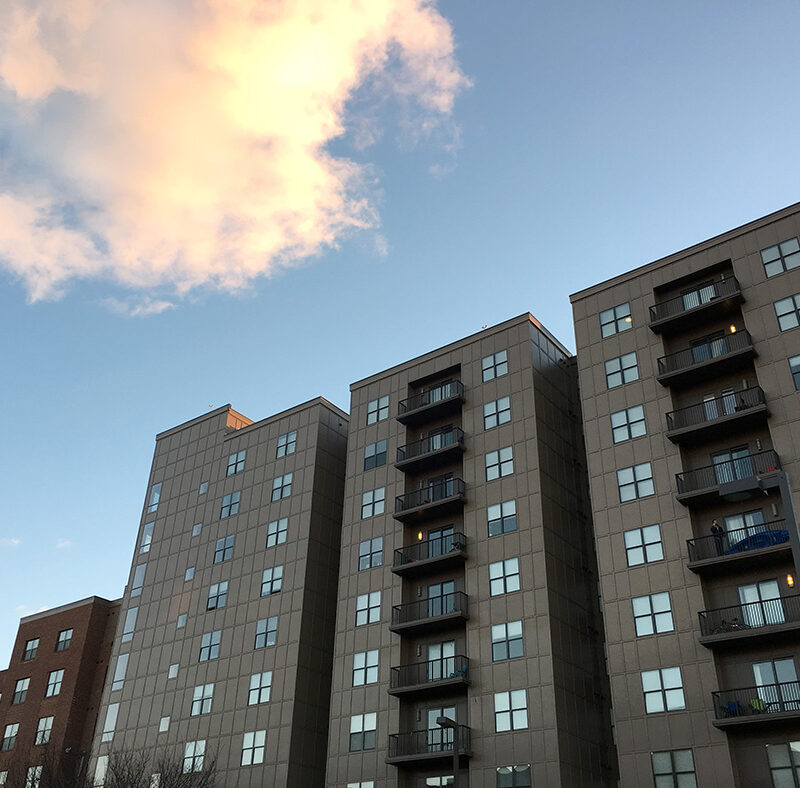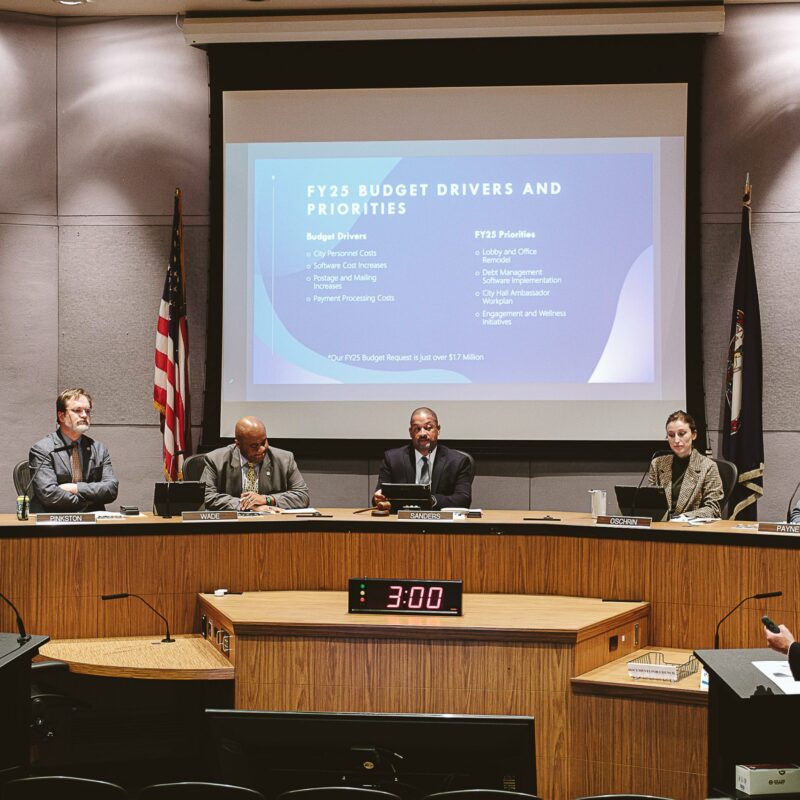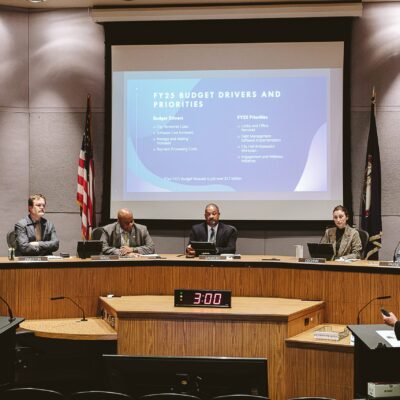Observatory Hill is the high water point of the UVA campus. Only a few miles away, the new John Paul Jones Arena sits over the low water point, the gully that separates Emmet Street from the back of the building. The stream that runs through its midsection flows into Meadow Creek through a pipe under Taco Bell and across Barracks where it spits out behind the Bodo’s off Emmet Street. Meadow Creek cuts through the city and ends up in the Rivanna. As the low point then, the area behind JPJ is critical to the health of the local waterways.
 It may look like landscaping, but this actually serves as a filtration system to clean water flowing off the John’s parking lot. |
As a result, the area was of great priority for the people responsible for the design and planning of the new arena. “It was very much a conscientious plan to make sure that how we dealt with stormwater on the site really worked,” John Meaney, a Siteworks landscape architect who partnered with VMDO architects on the construction of the stormwater management system.
Arenas usually need massive parking lots, but, as an impenetrable surface, asphalt is one of the main enemies of a healthy stream: Any water picks up all the chemicals and dirt and carries them along in a tidal wave of filth. To decrease the parking lot’s impact, the architects designed medians down the middle, creating a sluice that carries the water through grass and sections of stone that filter the water before it gets to a drain. Any of the water that makes its way past these barriers runs into the two rectangular bio-retention areas that sit lower than the rest of the front forum. With their stone barriers and grass/wildflower mix, they act as drains for the rain that falls in around the columns.
To the right of the building, a long row of retention areas, with more stone walls and growth continue to slow the water down that gushes out of a pipe above them. Under them runs another pipe connecting most of the drains that funnel water towards the creek. Before it reaches the creek it is channeled into a deep stone tunnel filled with stones that continue to filter the water. Running for hundreds of feet, the channel eventually spits the water out into a vegetated median swale that was graded and planted with indigenous growth to further minimize the effects a storm places on the low water point. Consequently, the pressure on connecting Meadow Creek and thus the Rivanna is reduced.
The innovative integration of the elements of the stormwater management system make it part of a drainage plan that the architects, John Meaney among them, hope will inspire visitors to imitate. “Maybe it will be a tool that some people can learn from,” Meaney says. “And then they can take that and maybe apply it to some other aspect of their lives.”
C-VILLE welcomes news tips from readers. Send them to news@c-ville.com.





